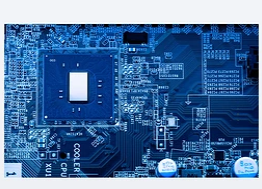The flexible PCB substrate is composed of an insulating base material, an adhesive and a copper conductor. After the circuit is manufactured by lithography, in order to prevent oxidation of the copper circuit and protect the circuit from the environmental temperature and humidity, a layer of covering must be added on it Film protection (Coverlayer), the composition of the cover film is an insulating substrate and an adhesive. Polyester (PET) and Polyimide (PI) are commonly used as the insulating base material for flexible circuit board substrates, each of which has advantages and disadvantages. The cost of PET is lower, and the reliability of PI is higher. At present, many companies are developing Replaceable materials, such as PBO developed by Dow Chemical, PIBO and LCP from Kuraray. Adhesives are generally used for flexible circuit board substrates. The thermal properties and reliability of current adhesive material properties are poor. Therefore, if the adhesive can be removed, its electrical and thermal properties can be improved. In addition, in terms of cover film material technology, the traditional method is to use non-optically sensitive materials. Before adding this protective film, mechanical drilling must be used to reserve its contacts, solder pads and guide holes. Generally, the precision is only It can reach the diameter of 0.6~0.8mm, which cannot be applied to the flexible board of the load-bearing component. The diameter of this guide hole will have to reach 50μm in the future. If a photosensitive cover film is used, its resolution will be increased to below 100μm.

At present, non-adhesive flexible substrates will increase with the demand for long-term reliability of products, and the application of thinner and load-bearing components. Non-adhesive flexible substrates will be the future trend of flexible substrates, and its main manufacturing method There are three types: (1) Sputtering/Plating; (2) Coating (Cast); (3) Hot pressing (Lamination). The three have their own advantages and disadvantages, and the manufacturing process is as follows:
1. Sputtering method/electroplating method: Using PI film as the substrate, first sputter a thin layer of copper (below 1μ), etch out the circuit by photolithography, and then electroplating on the copper circuit by electroplating. Increase the thickness of copper to achieve the required thickness, similar to the semi-additive method of circuit boards.
2. Coating method: Use copper foil as the base material, first coat a thin layer of high-order PI resin, and after high temperature hardening, coat a second thicker layer of PI resin to increase the rigidity of the substrate. After hardening, 2L is formed. This method needs to be coated twice, and the process cost is relatively high. To reduce the cost, there are two methods. One is to use precision coating technology to design double-layer coating at the same time. The resin is coated on the copper foil at the same time to reduce the steps of the manufacturing process. The other is to develop a single-layer PI resin formula to replace the double-layer coating, so that it has adhesion and stability, and can also simplify the manufacturing process.
3. Hot pressing method: First coat a thin layer of thermoplastic PI resin with PI film as the base material, then harden at high temperature, place the copper foil on the hardened thermoplastic PI resin, and then use high temperature and high pressure to make the thermoplastic PI is remelted and pressed together with the copper foil to form 2L.
At present, there is no single process method that can meet all needs. The process needs to be determined from the material selection and thickness requirements of the PCB designer. If the coating method is selected, the cost and properties can be better balanced, except for the good In addition to the excellent adhesion and the large conductor selectivity, the thickness of the substrate can also be very thin. At present, only a few manufacturers have the ability to produce the double-sided process because the process is more difficult. However, in 1999, the double-sided coating method The output of 2L exceeds 970,000 square meters. According to the statistics of TechSearch International, the proportion of the three process methods is estimated based on the output in 2000. The global monthly output is estimated to be 220,000 square meters, and the most commonly used method is the sputtering method.
At present, PIC has two types: dry film and liquid film. The advantage of dry film is that it is solvent-free and easier to manufacture, but the cost per unit area is higher and it is less resistant to chemicals. Liquid PIC requires a coating machine, but the cost is lower. Suitable for mass PCB production process. There are two types of substrates: Acrylic/Epoxy and PI. According to TechSearch statistics, Epoxy-based liquid PIC currently has the highest PCB market share, exceeding 70%, and Nippon Polytech/Rogers has the highest share of 44%, followed by Nitto Denko owns 21%, and DuPont ranks third with 18%. Among them, liquid PI has excellent heat resistance and insulation properties and can be applied to high-end IC packages.